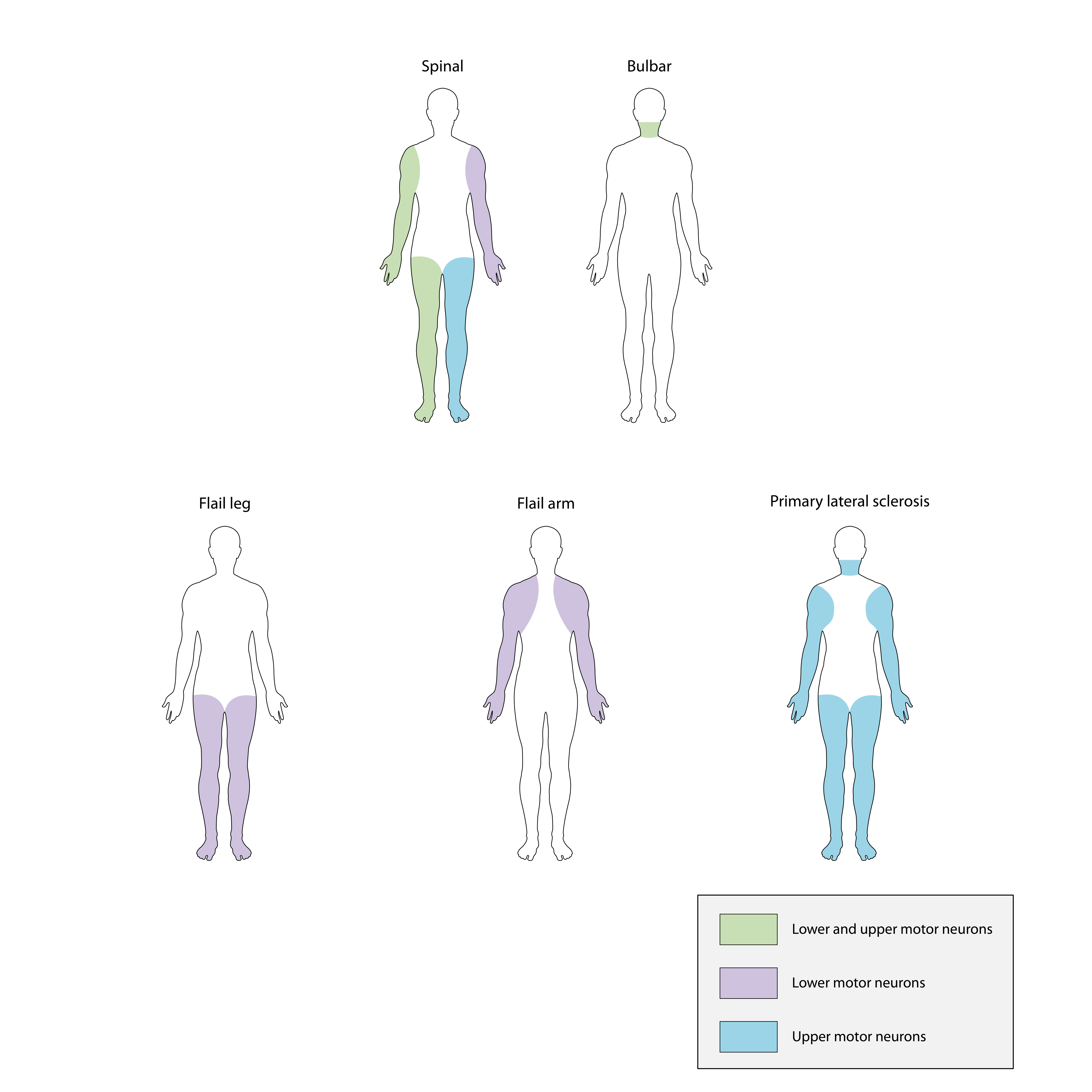|
Frontotemporal Dementia
Frontotemporal dementia (FTD), also called frontotemporal degeneration disease or frontotemporal neurocognitive disorder, encompasses several types of dementia involving the progressive degeneration of the brain's frontal lobe, frontal and temporal lobes. Men and women appear to be equally affected. FTD generally presents as a behavioral or language disorder with gradual onset. Signs and symptoms tend to appear in late adulthood, typically between the ages of 45 and 65, although it can affect people younger or older than this. There is currently no cure or approved symptomatic treatment for FTD, although some Off-label use, off-label drugs and behavioral methods are prescribed. Features of FTD were first described by Arnold Pick between 1892 and 1906. The name ''Pick's disease'' was coined in 1922. This term is now reserved only for the behavioral variant of FTD, in which characteristic Pick bodies and Pick cells are present. These were first described by Alois Alzheimer in 1911. ... [...More Info...] [...Related Items...] OR: [Wikipedia] [Google] [Baidu] |
Frontal Lobe
The frontal lobe is the largest of the four major lobes of the brain in mammals, and is located at the front of each cerebral hemisphere (in front of the parietal lobe and the temporal lobe). It is parted from the parietal lobe by a Sulcus (neuroanatomy), groove between tissues called the central sulcus and from the temporal lobe by a deeper groove called the lateral sulcus (Sylvian fissure). The most anterior rounded part of the frontal lobe (though not well-defined) is known as the frontal pole, one of the three Cerebral hemisphere#Poles, poles of the cerebrum. The frontal lobe is covered by the frontal cortex. The frontal cortex includes the premotor cortex and the primary motor cortex – parts of the motor cortex. The front part of the frontal cortex is covered by the prefrontal cortex. The nonprimary motor cortex is a functionally defined portion of the frontal lobe. There are four principal Gyrus, gyri in the frontal lobe. The precentral gyrus is directly anterior to the ... [...More Info...] [...Related Items...] OR: [Wikipedia] [Google] [Baidu] |
Aphasia
Aphasia, also known as dysphasia, is an impairment in a person's ability to comprehend or formulate language because of dysfunction in specific brain regions. The major causes are stroke and head trauma; prevalence is hard to determine, but aphasia due to stroke is estimated to be 0.1–0.4% in developed countries. Aphasia can also be the result of brain tumors, epilepsy, autoimmune neurological diseases, brain infections, or neurodegenerative diseases (such as dementias). To be diagnosed with aphasia, a person's language must be significantly impaired in one or more of the four aspects of communication. In the case of progressive aphasia, a noticeable decline in language abilities over a short period of time is required. The four aspects of communication include spoken language production, spoken language comprehension, written language production, and written language comprehension. Impairments in any of these aspects can impact functional communication. The difficulties o ... [...More Info...] [...Related Items...] OR: [Wikipedia] [Google] [Baidu] |
Early Onset Dementia
Early onset dementia or young onset dementia refers to dementia with symptom onset prior to age 65 years. Early onset dementia is a general term that describes a group of conditions featuring progressive cognitive decline, particularly in the domains of executive function, learning, language, memory, or behavior. This condition may occur due to various different causes, including degenerative, autoimmune, or infectious processes. The most common form of early onset dementia is Alzheimer's disease, followed by frontotemporal dementia, and vascular dementia, with Alzheimer's disease accounting for between 40 and 50% of cases. Less common forms of early onset dementia include Lewy body dementias (dementia with Lewy bodies and Parkinson's disease dementia), Huntington's disease, Creutzfeldt–Jakob disease, multiple sclerosis, alcohol-induced dementia, and other conditions. Childhood neurodegenerative disorders like mitochondrial diseases, lysosomal storage disorders, and leukodyst ... [...More Info...] [...Related Items...] OR: [Wikipedia] [Google] [Baidu] |
Prevalent
In epidemiology, prevalence is the proportion of a particular population found to be affected by a medical condition (typically a disease or a risk factor such as smoking or seatbelt use) at a specific time. It is derived by comparing the number of people found to have the condition with the total number of people studied and is usually expressed as a fraction, a percentage, or the number of cases per 10,000 or 100,000 people. Prevalence is most often used in questionnaire studies. Difference between prevalence and incidence Prevalence is the number of disease cases ''present ''in a particular population at a given time, whereas incidence is the number of new cases that ''develop ''during a specified time period. Prevalence answers "How many people have this disease right now?" or "How many people have had this disease during this time period?". Incidence answers "How many people acquired the disease uring a specified time period". However, mathematically, prevalence is proport ... [...More Info...] [...Related Items...] OR: [Wikipedia] [Google] [Baidu] |
Amyotrophic Lateral Sclerosis
Amyotrophic lateral sclerosis (ALS), also known as motor neuron disease (MND) or—in the United States—Lou Gehrig's disease (LGD), is a rare, Terminal illness, terminal neurodegenerative disease, neurodegenerative disorder that results in the progressive loss of both upper and lower motor neurons that normally control Skeletal muscle, voluntary muscle contraction. ALS is the most common form of the motor neuron diseases. ALS often presents in its early stages with gradual muscle Spasticity, stiffness, Fasciculation, twitches, Muscle weakness, weakness, and Muscle atrophy, wasting. Motor neuron loss typically continues until the abilities to eat, speak, move, and, lastly, breathe are all lost. While only 15% of people with ALS also fully develop frontotemporal dementia, an estimated 50% face at least some minor difficulties with cognitive disorder, thinking and behavior. Depending on which of the aforementioned symptoms develops first, ALS is classified as ''limb-onset'' (b ... [...More Info...] [...Related Items...] OR: [Wikipedia] [Google] [Baidu] |
Corticobasal Syndrome
Corticobasal syndrome (CBS) is a rare, progressive atypical Parkinsonism syndrome and is a tauopathy related to frontotemporal dementia. CBS is typically caused by the deposit of tau proteins forming in different areas of the brain. Classification CBS is the most common type of corticobasal degeneration (CBD) although the terms CBD and CBS have been used interchangeably in the past. The other three phenotypes of CBD are: * frontal-behavioral dysexecutive-spatial syndrome (FBS) * nonfluent/agrammatic variant of primary progressive aphasia (naPPA), and * progressive supranuclear palsy syndrome (PSPS). Symptoms and signs Symptoms of CBS include apraxia, alien limb phenomenon, frontal deficits, and extrapyramidal motor symptoms such as myoclonus or rigidity. Movement deficits often begin on one side and progress to the other. Pathophysiology CBD is the pathology underlying approximately 50% of CBS cases. Diagnosis The Armstrong criteria were proposed in 2013; the accuracy of ... [...More Info...] [...Related Items...] OR: [Wikipedia] [Google] [Baidu] |
Basophilic Inclusion Body Disease
Frontotemporal dementia (FTD), also called frontotemporal degeneration disease or frontotemporal neurocognitive disorder, encompasses several types of dementia involving the progressive degeneration of the brain's frontal and temporal lobes. Men and women appear to be equally affected. FTD generally presents as a behavioral or language disorder with gradual onset. Signs and symptoms tend to appear in late adulthood, typically between the ages of 45 and 65, although it can affect people younger or older than this. There is currently no cure or approved symptomatic treatment for FTD, although some off-label drugs and behavioral methods are prescribed. Features of FTD were first described by Arnold Pick between 1892 and 1906. The name ''Pick's disease'' was coined in 1922. This term is now reserved only for the behavioral variant of FTD, in which characteristic Pick bodies and Pick cells are present. These were first described by Alois Alzheimer in 1911. Common signs and symptoms ... [...More Info...] [...Related Items...] OR: [Wikipedia] [Google] [Baidu] |
Progressive Nonfluent Aphasia
Progressive nonfluent aphasia (PNFA) is one of three clinical syndromes associated with frontotemporal lobar degeneration. PNFA has an insidious onset of language deficits over time as opposed to other stroke-based aphasias, which occur acutely following trauma to the brain. The specific degeneration of the frontal and temporal lobes in PNFA creates hallmark language deficits differentiating this disorder from other Alzheimer-type disorders by the initial absence of other cognitive and memory deficits. This disorder commonly has a primary effect on the left hemisphere, causing the symptomatic display of expressive language deficits (production difficulties) and sometimes may disrupt receptive abilities in comprehending grammatically complex language. Presentation The main clinical features are signature language progressive difficulties with speech production. There can be problems in different parts of the speech production system, hence patients can present with articulatory bre ... [...More Info...] [...Related Items...] OR: [Wikipedia] [Google] [Baidu] |
Semantic Dementia
In neurology, semantic dementia (SD), also known as semantic variant primary progressive aphasia (svPPA), is a progressive neurodegenerative disorder characterized by loss of semantic memory in both the verbal and non-verbal domains. However, the most common presenting symptoms are in the verbal domain (with loss of word meaning). Semantic dementia is a disorder of semantic memory that causes patients to lose the ability to match words or images to their meanings. However, it is fairly rare for patients with semantic dementia to develop category specific impairments, though there have been documented cases of it occurring. Typically, a more generalized semantic impairment results from dimmed semantic representations in the brain. SD is one of the three canonical clinical syndromes associated with frontotemporal lobar degeneration (FTLD), with the other two being frontotemporal dementia and progressive nonfluent aphasia. SD is a clinically defined syndrome but is associated wi ... [...More Info...] [...Related Items...] OR: [Wikipedia] [Google] [Baidu] |
Primary Progressive Aphasia
In neurology, primary progressive aphasia (PPA) is a type of neurological syndrome in which language capabilities slowly and progressively become impaired. As with other types of aphasia, the symptoms that accompany PPA depend on what parts of the brain's left hemisphere are significantly damaged. However, unlike most other aphasias, PPA results from continuous deterioration in brain tissue, which leads to early symptoms being far less detrimental than later symptoms. Those with PPA slowly lose the ability to speak, write, read, and generally comprehend language. Eventually, almost every patient becomes mute and completely loses the ability to understand both written and spoken language. Although it was first described as solely impairment of language capabilities while other mental functions remain intact, it is now recognized that many, if not most of those with PPA experience impairment of memory, short-term memory formation and loss of executive functions. It was fi ... [...More Info...] [...Related Items...] OR: [Wikipedia] [Google] [Baidu] |
Smithsonian Magazine
''Smithsonian'' is a magazine covering science, history, art, popular culture and innovation. The first issue was published in 1970. History The history of ''Smithsonian'' began when Edward K. Thompson, the retired editor of ''Life'' magazine, was asked by then-Secretary of the Smithsonian, S. Dillon Ripley, to produce a magazine "about things in which the Smithsonian nstitutionis interested, might be interested or ought to be interested." Thompson later recalled that his philosophy for the new magazine was that it "would stir curiosity in already receptive minds. It would deal with history as it is relevant to the present. It would present art, since true art is never dated, in the richest possible reproduction. It would peer into the future via coverage of social progress and of science and technology. Technical matters would be digested and made intelligible by skilled writers who would stimulate readers to reach upward while not turning them off with jargon. We would fin ... [...More Info...] [...Related Items...] OR: [Wikipedia] [Google] [Baidu] |



